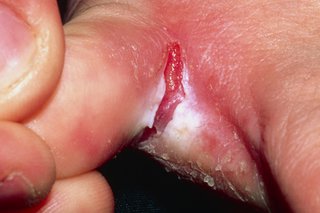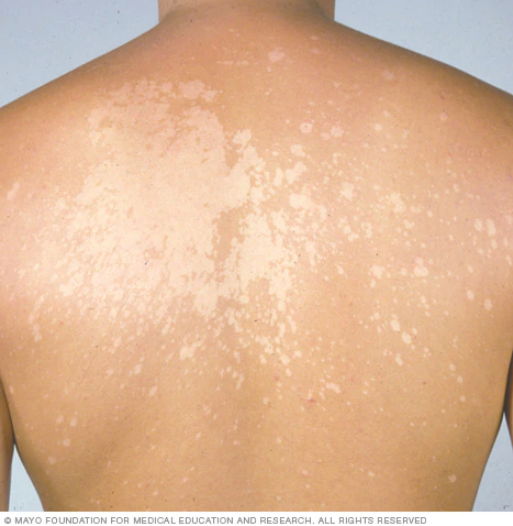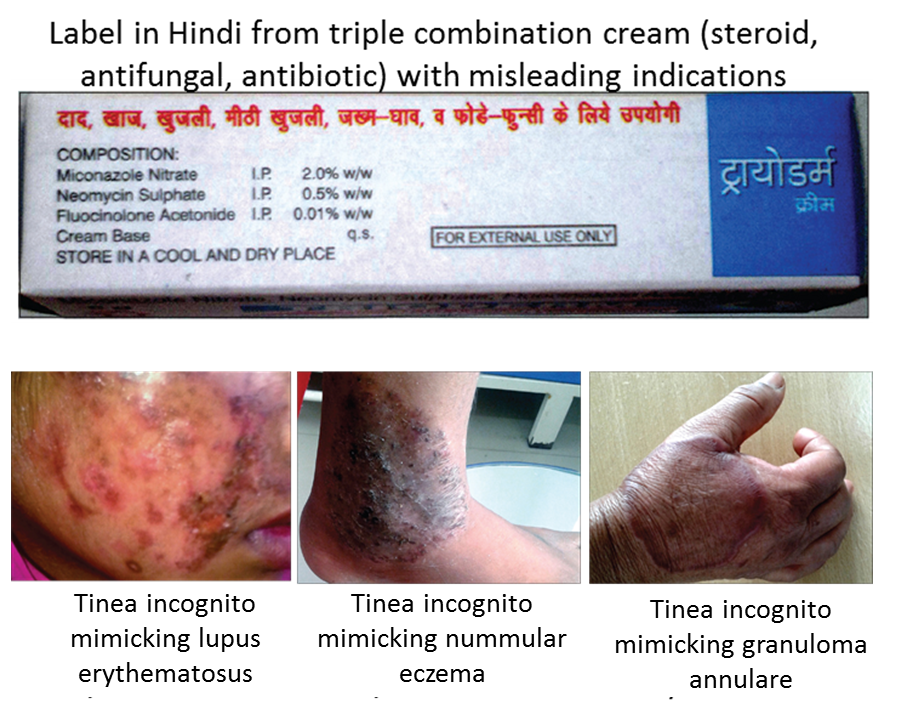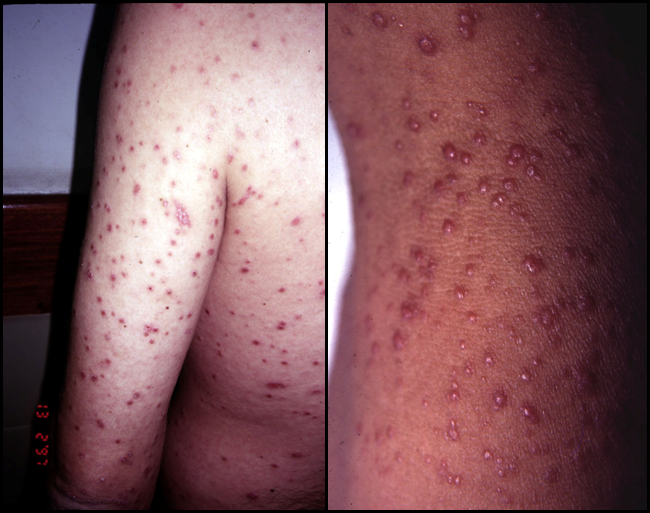Fungal disease of the skin, hair and nails is common, affecting an estimated billion people. Hair infections are especially common in children and toenail infections in older people. Most skin and hair infections are passed from person to person, but some are acquired from animals.
Dermoscopy can be used to evaluate lesions, or skin scrapings can be cultured and/or examined by direct microscopy (KOH). The latter are particularly important in cases with an unusual presentation.
Common causative fungi include Trichophyton, Microsporum and Epidermophyton, or more rarely Arthroderma, Ctenomyces, Lophophyton, Nannizzia, Guarromyces and Paraphyton (learn more at DermNetNZ/@dermnetnz)
Inappropriate use of topical steroid creams (especially over-the-counter use) may cause progression of a simple dermatophyte infection into chronic tinea.

Local infections
Fungal lesions visible on the skin may be due to a local cutaneous infection, caused by one of the dermatophyte fungi.

Typical appearance of ringworm (tinea corporis): scaly patch with red, inflamed edge 
Athlete’s foot (tinea pedis): cracked skin between toes (picture courtesy of NHS) 
Pityriasis versicolor: raindrop-like depigmentation (or hyperpigmentation) without scaling (image courtesy of Mayo Clinic)


Disseminated infections
Skin lesions can also occasionally arise as a manifestation of a systemic infection, particularly in immunocompromised patients.
| Immunocompetent | Immunocompromised (e.g. HIV/AIDS) |
| Coccidioidomycosis Blastomycosis | Cryptococcal meningitis Histoplasmosis (disseminated) Talaromyces marneffei (formerly Penicillium) Candidaemia (especially Candida tropicalis fungaemia) Invasive aspergillosis Rarely: Fusarium, Acremonium, Pneumocystis, Lomentospora prolificans (formerly Scedosporium) |

Skin lesions during disseminated histoplasmosis (image courtesy of Dr E. Rodriguez, Buenos Aires)
